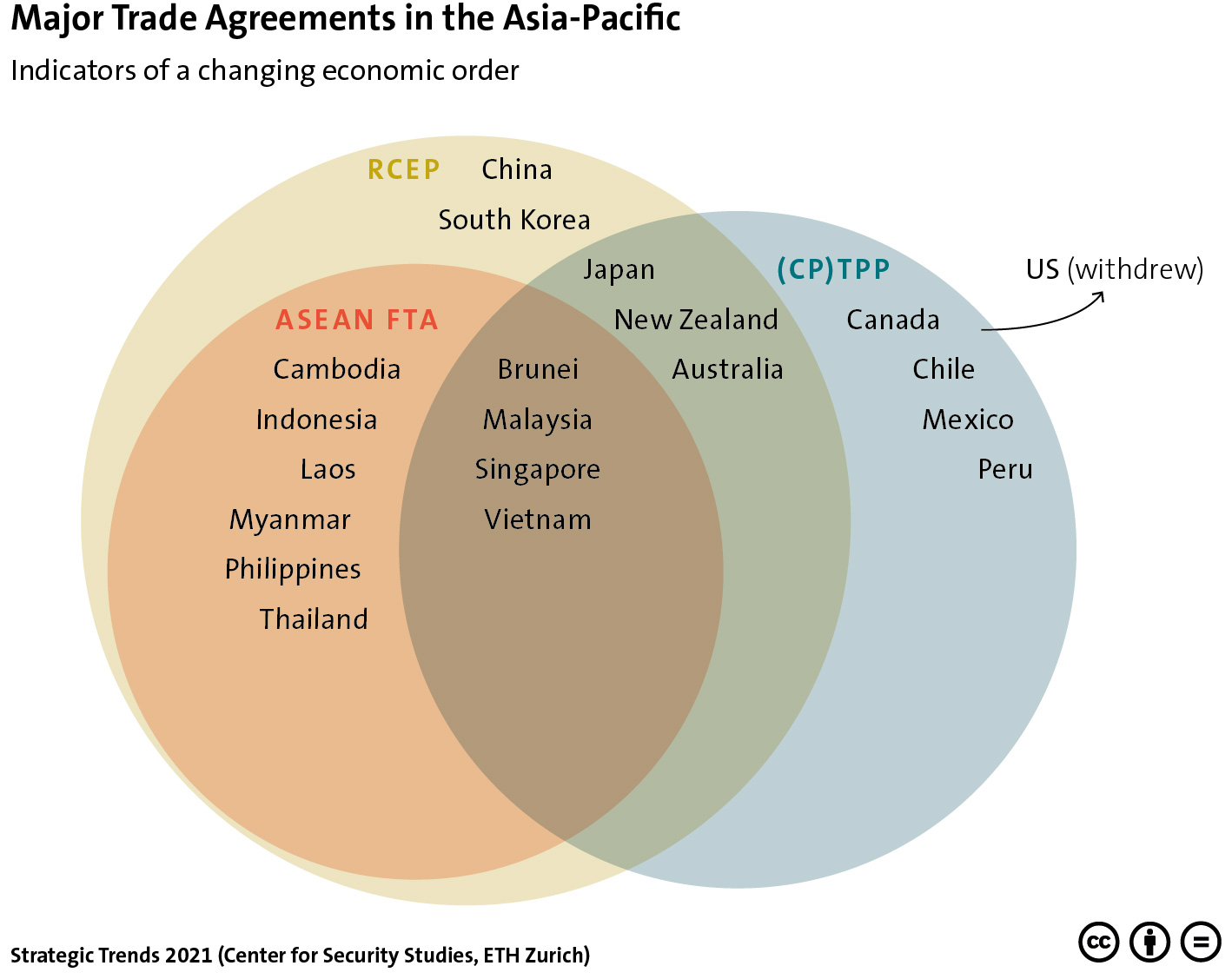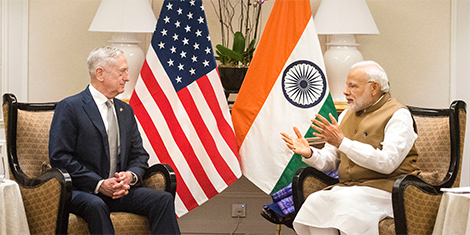
This week’s featured graphic illustrates major trade agreements in the Asia-Pacific. To find out more on Japanese and South Korean perspectives on changing power configurations in Asia, read Linda Maduz’ Strategic Trends 2021 chapter here.

This week’s featured graphic illustrates major trade agreements in the Asia-Pacific. To find out more on Japanese and South Korean perspectives on changing power configurations in Asia, read Linda Maduz’ Strategic Trends 2021 chapter here.

This article was originally published by Pacific Forum on 5 February 2019.
President Trump came into office with strong prior beliefs about the failure of US alliance policy and the need for allies to pay for US defense efforts on their behalf. Some feared that he presaged a rising isolationism among the American public that would support a president seeking to pull back from US commitments overseas. But Trump is failing to lay the groundwork for a new approach to the Indo-Pacific. Instead, the US is pursuing a two-track Asia policy, with Congress and the administration reading from different scripts. And the public is only on board with one of those approaches.

This article was originally published by the Australian Strategic Policy Institute’s (ASPI) The Strategist on 10 September 2018.
If you were trying to design a low-cost strategy to constrict the operational horizon of an important US ally in the region, China’s ploys in the Pacific wouldn’t be a bad model to examine.
China has been talking a big game in the Pacific. It’s been reported as looking to fund a major regional military base in Fiji and scoping Vanuatu for a military base of its own. And it apparently has plans to refurbish four ports in Papua New Guinea, including the strategically significant Manus Island. Over the decade 2006–2016, it has committed US$1.8 billion in aid, and Chinese telco Huawei has sought to build undersea internet cables in the region.

This article was originally published by YaleGlobal Online on 14 June 2018.
Global powers show renewed interest in the Indo-Pacific region, but should resist piling on with geopolitical intentions
The 2018 Shangri-La Dialogue in Singapore might as well have been renamed the “Indo-Pacific Dialogue.” In the plenaries and the panels, in the Q&As, corridors, and coffee breaks, not even the imminent Trump-Kim summit hosted by Singapore could compete with the “Indo-Pacific” among the attendees. Although the toponym itself is old, its sudden popularity is new, reflecting new geopolitical aspirations for the region.

This article was published by the Lowy Institute on 29 March 2018.
America’s leadership in the Asia Pacific was founded in the ashes of Hiroshima and Nagasaki, and on its status as the first atomic power. Nuclear weapons thereafter defined Asian geopolitics. Today, on the Korean Peninsula, nuclear technology is again set to feature in a dramatic shift in Asia’s power balance. With a summit meeting between President Trump and North Korean leader Kim Jong Un now in prospect, future historians may come to see North Korea’s nuclear-armed ballistic missiles as the trigger that unravels America’s strategic leadership of Asia.